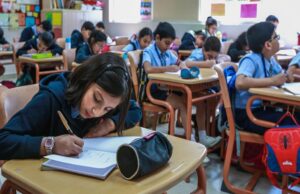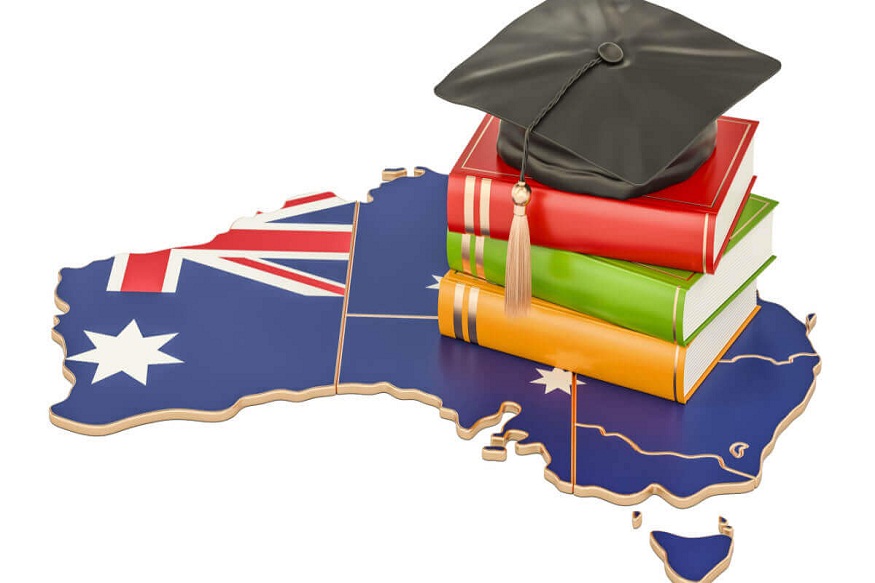Reduction of the national education budget, growing privatization of education, discrimination: young people are critical of the policy pursued since 2014 by the Hindu nationalist government, which has contributed to widening inequalities, by penalizing the most vulnerable schoolchildren and students. disadvantaged. Lighting.
What challenges for education in India?
In India, 47 million students leave school before grade 10. Here a school support center for children from socially disadvantaged families. LAND OF MEN SWITZERLAND/ S. VON ALLMEN
The “biggest elections in history”, according to the international press, began in India on April 11: 900 million citizens go to the polls until May 23. From Kashmir to Kerala, from Rajasthan to Nagaland (without forgetting the Lakshadweep, Andaman and Nicobar Islands), the Indian population votes to renew the parliament, which will choose the Prime Minister. Among this impressive crowd, 15 million young people aged 18 and 19 will vote for the first time in their lives.
“Dear new voters, I have a special request for you…”, Prime Minister Narendra Modi, in power since 2014, addressed these young people in a tweet on April 9. These new potential votes are valuable for his party, the Bharatiya Janata Party (“Indian People’s Party”, a Hindu nationalist party), which lost several provinces in the last local elections in 2018. The head of the Indian government is currently seeking a second mandate, facing his main rival Rahul Gandhi, president of the Congress party, son of Rajiv and grandson of Indira Gandhi.
Modi, who handles social networks perfectly, regularly addresses young people. In 2014, in his electoral manifesto, he promised them an increase in the national education budget to 6% of GDP, “equal opportunities” and “access and success for all learners”. A year after his election, in a Letter to young people published on his website, he pledged that “growth translates into work for all”, envisaged creating in each province centers similar to the IITs and AAIMS (prestigious Indian Institutes of Technology and Medicine), and promised to install “wifi in all universities by 2017 and broadband connection in all schools.”
Public education for all
The announced objectives are far from being achieved and dissatisfaction is growing for many young Indians, for whom education is, along with employment, one of the important issues in these elections. For several months, they have been mobilizing in favor of public education, in the face of the government’s broken promises.
Between 2014 and 2018, the share of national education in the budget has indeed decreased, from 6.2% to 3.7%. Criticisms are raised against the increase in the cost of education and, above all, against the growing privatization of education. At 6.1%, the unemployment rate would also be the highest in India for forty-five years.
During a National Youth Congress, organized in Kolkata (Calcutta) last December by the Indian Youth Federation, 150 young people demanded an increase in the national education budget and respect for the law on the right to education. Introduced in 2009, this guarantees free and compulsory schooling for children aged 6 to 14. These young people, from seven Indian provinces, defended quality, equitable and inclusive public education. For them, education must take into account the specific needs of children (including working children or children from migrant families). At the end of the congress, they presented their action plan, based on a survey of teachers, parents,
In February, 5,000 students angry at the Nationalist government’s education policy – some Indian media speak of a “systematic destruction” of education since 2014 – demonstrated in New Delhi with similar demands. These young people are all the more worried that, since Modi’s accession to power, repressive measures against the student community have been common, in particular against students who are members of left-wing organizations or come from religious or ethnic minorities.
Hyper competitive system
The school in India is both a mirror and a generator of deep inequalities. Despite the progress made over the past decade to reduce poverty, and its status as a nuclear and space power, India today has 364 million people suffering, according to the UNDP (United Nations Development Programme). , profound deficiencies in education, health, food, access to water and sanitation. The UN agency reveals that “not having in the family a member who has completed at least six years of school” is the second factor contributing to this poverty .
India now has more than one and a half million schools. Only a small minority of students have access to the best, well-equipped institutes, at the cost of enormous stress in a hyper-competitive system. In a parallel reality, the students of thousands of Indian schools, especially in the countryside, do not have basic materials such as textbooks or desks, nor qualified teachers, even no drinking water, nor toilets. in their establishment.
Modi’s government lists “the construction of toilets in all schools” as one of its significant achievements in 2018. Yet a survey of 16,000 rural schools last year shows that about 25% of schools do not had no toilets, or that they were unusable (results from the Annual Status of Education Report, ASER, 2018). This is not a detail: the absence of toilets forces many children to stop their schooling – especially girls – for lack of privacy.
“In India, keeping children in school is a challenge,” says Ashish Ghosh, coordinator of Terre des Hommes Switzerland, based in Kolkata. For this professional in the rights of the child, dropping out of school is especially worrying in secondary education (the age group of 14-16 years, for whom school is no longer free), where it affects nearly of 18% of students. In the provinces of Jarkhand and Bihar, in northern India, and several provinces in the north-east, on the borders of China, Bangladesh and Myanmar, it is even more than half of secondary school students who drop out. school. In a 2016 report, UNESCO estimated that 47 million students in India left school before grade 10.




